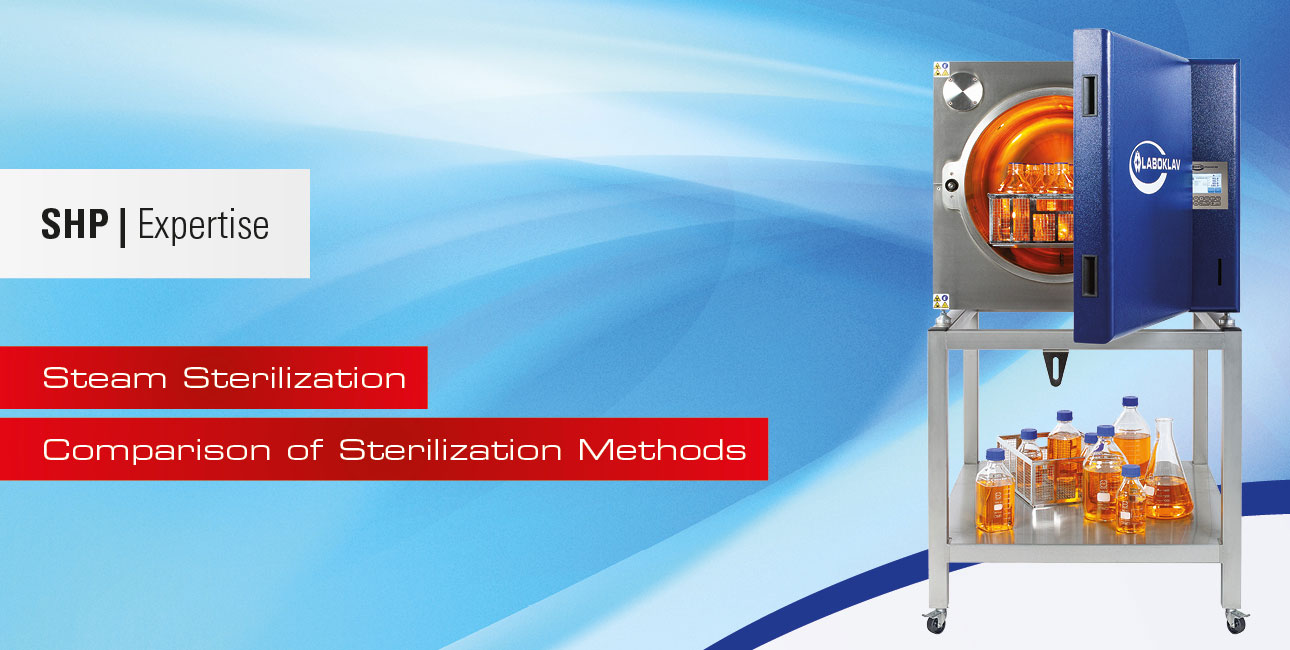Here you will find a brief explanation of the respective sterilization methods.
Steam Sterilization
Mode of Action
In steam sterilization, microorganisms are destroyed by moist heat. The hot, saturated steam causes protein coagulation, which inactivates the microorganisms.
Applications
Steam sterilization is used for heat-resistant items in medicine, the pharmaceutical industry, and laboratories.
Advantages
This method is fast, predictable, non-toxic, and cost-effective.
Disadvantages
It is only suitable for heat-resistant materials and cannot be used on heat- or moisture-sensitive items.
Hot Air Sterilization
Mode of Action
Hot air sterilization kills microorganisms through dry heat. Its effect is based on the oxidation of cellular components, leading to microbial inactivation.
Applications
This method is used for heat-resistant materials, especially in situations where moist heat is unsuitable.
Advantages
It is considered safe, easy to use, and inexpensive.
Disadvantages
Compared to moist heat, it has lower effectiveness and requires longer exposure times.
Ethylene Oxide Sterilization
Mode of Action
Ethylene oxide sterilization destroys microorganisms through a biochemical reaction. Ethylene oxide alkylates proteins and other cell components, causing irreversible damage to the microorganisms.
Applications
This method is mainly used in industry for heat-sensitive materials that cannot withstand heat. It is considered a form of cold sterilization.
Advantages
This method has high antimicrobial effectiveness, is relatively inexpensive, and suitable for temperature-sensitive materials.
Disadvantages
Ethylene oxide is toxic, the process is only moderately predictable, and the sterilized goods must be thoroughly degassed afterward.
Formaldehyde Sterilization
Mode of Action
Formaldehyde sterilization also kills microorganisms through a biochemical reaction. Formaldehyde molecules alkylate proteins and other cell components, resulting in irreversible damage to the microorganisms.
Applications
This method is used for heat-sensitive materials that cannot tolerate high temperatures. It is a form of cold sterilization.
Advantages
This method offers high antimicrobial effectiveness and is suitable for sensitive materials as a cold sterilization method.
Disadvantages
Formaldehyde is toxic, but its strong odor makes it easily detectable. Post-sterilization degassing of the items is required.
Sterilization with Ionizing Radiation
Mode of Action
In sterilization with ionizing radiation, microorganisms are inactivated by exposure to electron or gamma rays. The radiation damages the genetic material of the microorganisms, preventing reproduction.
Applications
This method is primarily used for treating disposable medical and pharmaceutical products.
Advantages
Sterilization is fast, effective, and suitable for sensitive products that could be damaged by other sterilization methods.
Disadvantages
The process can be costly and there are limited facilities capable of performing ionizing radiation sterilization.
Sterile Filtration
Mode of Action
Sterile filtration removes microorganisms present in liquids or gases using suitable filter materials. The porous structure of the filter retains microorganisms from the flow.
Applications
This method is used to reduce the microbial load in liquids or gases, particularly in sterile processes in the pharmaceutical and food industries.
Advantages
It is a gentle method that preserves the chemical composition of the liquids or gases. It is also fast and cost-effective.
Disadvantages
Effectiveness may be reduced by clogged filters or insufficient filtration properties. Additionally, some microorganisms may not be completely removed if the filter pores are not fine enough.






